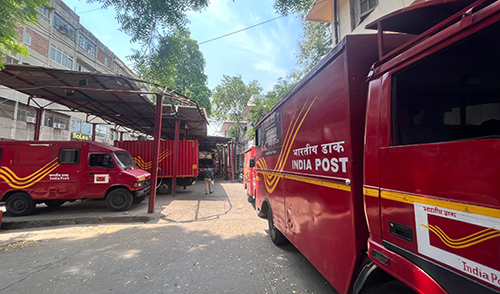Preparing Roadmap for Fleet Electrification of Department of Posts, India and Estimating Potential Cost and Emission Benefits

At the COP 26 Climate Summit in Glasgow, India set an ambitious target of attaining net-zero emissions by 2070 and a 45% reduction in the emissions intensity of its GDP below the 2005 levels by 2030. The transport sector holds responsible for 14 percent of energy-related CO2 emissions, and it also accounts for 70 percent of total diesel consumption and 100 percent of gasoline consumption.[1]
Accounting for around 15% of total vehicular movement, urban freight activities contribute significantly to the local air pollution, as commercial vehicle segment is largely dependent on conventional fuels.[2] With rapid increase in freight activity, well-planned efforts toward achieving net-zero emissions target by 2070 are crucial.
Multiple organizations, both in the government and private sphere, have committed to become net-zero or reduce emissions, in line with India’s low-carbon transition. The Department of Posts (DoP) holds a significant position in the movement of mails and parcels across the country with the help of a wide network of 1.6 lakh post offices. It is critical to understand the need to reduce transport emissions by the DoP and contribute actively to India’s commitment to net-zero emissions and clean development fronts. TERI, therefore, aims to encourage and support DoP to work towards India’s target of Low Carbon Development Pathways in six metro cities: Delhi, Mumbai, Chennai, Kolkata, Hyderabad, and Ahmedabad.
Objective of the study: “Electrification of the Postal Services of the Department of Posts, GoI”
The following are key activities proposed under the aforementioned objective:
- Understand the baseline scenario of current operations of DoP in selected cities/circles of postal operation in India
- Conduct a pan-India, multi-city study for the Department of Posts to assess the viability of transition from diesel/petrol-powered vehicles to electric/battery-powered vehicles (EVs), including the following points:
- Total Cost of Ownership (TCO) of vehicles–diesel, petrol, CNG, and battery-electric (upfront purchase cost, driver, helper, fuel, insurance, and other operation & maintenance costs, etc.)
- Understanding the charging infrastructure requirement and identifying viable solutions
- Suggest possible replacement scenarios from the internal combustion engine (ICE) to EVs by identifying viable business models–CAPEX vs OPEX
- Prepare a roadmap for the Department of Posts toward EV transition
- Support DoP in preparing technical terms of reference for sourcing EVs (quotations/bids) for postal delivery services
- Calculate GHG emissions and potential reduction by 2030
[2] Urban Transportation, 2019 (https://www.inae.in/storage/2020/01/Urban-Transportation.pdf)

